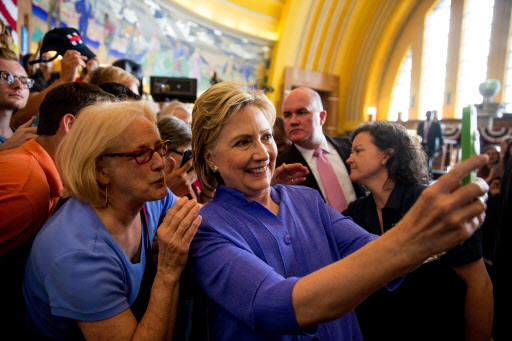CINCINNATI (AP) -- Just in time for the Cleveland-hosted Republican National Convention this month and as the general election campaign heats up, a new book, “The Bellwether,” examines Ohio’s importance in picking the nation’s president.
Every four years, Ohio becomes, to paraphrase its former tourism slogan, the heart of it all, with the candidates, their surrogates and news crews overrunning the state while a seemingly endless loop of campaign ads dominates its airwaves.
The stakes couldn’t be higher. The winner of Ohio has won the White House in the last 13 elections.
“Everyone knows that you can’t get a Republican elected to the White House without carrying Ohio,” state GOP chairman Matt Borges said this year, referring to the fact that none has yet. And not since John F. Kennedy was elected in 1960 while Richard Nixon won Ohio has a Democrat done so. Kennedy and fellow Democrat Franklin D. Roosevelt (1944) are the only presidents elected without winning Ohio since the 19th century.
In the 2015 book “Presidential Swing States: Why Only Ten Matter,” political scientists David Schultz and the late Stacey Hunter Hecht identified Colorado, Florida, Iowa, Ohio, Nevada, New Hampshire, New Mexico, North Carolina, Virginia and Wisconsin as the 10 states that “seem genuinely in play” between the two major parties. For the rest of the country, they wrote, the “2016 presidential race is arguably already over.”
Their book also notes Ohio’s seemingly oversized role in presidential elections, possibly the nation’s “quintessential swing state.”
In his new book, Ohio native Kyle Kondik, of the University of Virginia’s Center for Politics, combines history and statistics to explain that the state stands out among its swing states, the states either party can win in a given election, as a bellwether because of its remarkably reliable record of mirroring national sentiment.
 |
Democratic presidential candidate Hillary Clinton takes a photo with a member of the audience following a rally at the Cincinnati Museum Center at Union Terminal in Cincinnati on June 27. (AP-Yonhap) |
Numbers that back that up:
- Ohio has voted for the presidential winner in 28 of the last 30 elections, or 93 percent. New Mexico (which first participated as a state in 1912) is second with 24 of 26, or 92 percent, with Illinois and Nevada third with 24 of 30, or 87 percent.
- Ohio’s percentage deviation from the national presidential vote has been less than 5 percent in 27 of the 30 elections, or 90 percent of the time, with New Mexico a distant second with 20 of 26, or 77 percent.
- Ohio's electoral votes have been decisive five times, most recently in 2004, when they clinched George W. Bush’s reelection in a tight race that current Secretary of State John Kerry would have won with Ohio. No other state has done so more than three times since 1896.
The trend is picking up steam, too, as the state’s results have been matching the nation’s even more closely in recent elections.
“The state has actually become a better bellwether over time,” Kondik said. “If you look at the elections since 1964, the state’s never been more of a bellwether that it’s been since then.”
His book traces Ohio‘s history, settled by “a lot of the component parts” of the new nation from Connecticut Yankees to Virginia planters, to become what an early Cincinnati newspaper called “the first true American state."
Its three biggest cities are often described as reflecting the East with Cleveland, the Midwest with Columbus and the South with Cincinnati, and scholars often divide the state into “the five Ohios” of distinct regions that reflect national regions.
History isn’t a guarantor of Ohio’s role, Kondik said, and the unconventional, unpredictable nature of Donald Trump’s campaign could upset the norm.
“Maybe this is the year when something different happens,” he said. “It's going to be an interesting political science experiment, besides the importance.”
While noting that other states considered bellwethers in the recent past such as Illinois, now Democratic turf in presidential elections, and Missouri, which has swung Republican, have lost those mantles, Kondik thinks Ohio will continue although its importance could slip as its electoral vote total continues to decline. Ohio now has 18, down from a peak of 26, because of national population shifts.






![[Exclusive] Hyundai Mobis eyes closer ties with BYD](http://res.heraldm.com/phpwas/restmb_idxmake.php?idx=644&simg=/content/image/2024/11/25/20241125050044_0.jpg)
![[Herald Review] 'Gangnam B-Side' combines social realism with masterful suspense, performance](http://res.heraldm.com/phpwas/restmb_idxmake.php?idx=644&simg=/content/image/2024/11/25/20241125050072_0.jpg)
